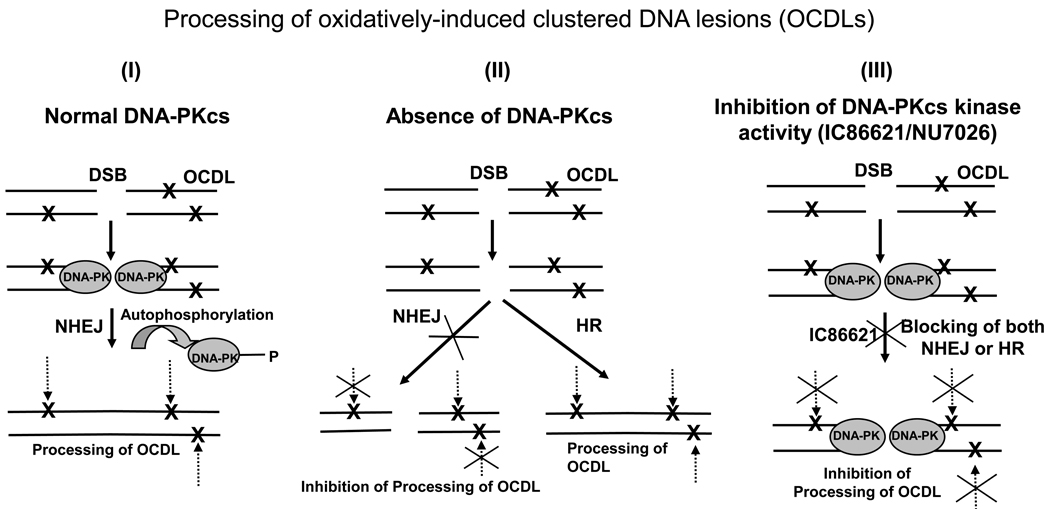Fig. 5.
Schematic representing the alternative pathways of OCDL processing in the presence, absence, or inhibition of DNA-PKcs activity. Here OCDLs are shown flanking a DSB based on current theoretical and experimental evidence [2]. In DNA-PK normal cells the autophosphorylation of DNA-PK leads to its disassociation from the DNA ends allowing NHEJ or HR to proceed in DSB repair (Pathway I). As soon as the DSB is repaired all the other neighboring clustered DNA lesions can be processed. In the case of DNA-Pkcs absence, broken DNA ends cannot be repaired by NHEJ, and HR or other slower pathways repair the DSB. The presence of a SSB or DSB can be a significant inhibitory factor for the processing of other neighboring damage (Pathway II). Treatment of cells with drug is expected to lead to the inactivation of DNA-PKcs due to inhibition of its autophosphorylation. Therefore DNA-PKcs is expected, according to current status of knowledge, to be unable to dissociate from the DNA ends, physically blocking both NHEJ and HR (Pathway III). The presence of the DSB and the DNA-PK molecule is expected to have a profound inhibitory effect on the processing of all neighboring clustered DNA lesions. Additionally, the inactivation of DNA-PK can lead to the compromise of other repair pathways associated with its kinase activity including base excision repair (BER) inhibiting directly the processing of base lesions.

